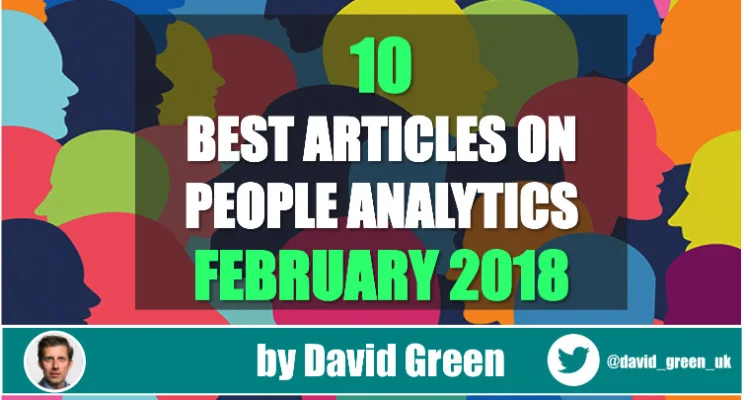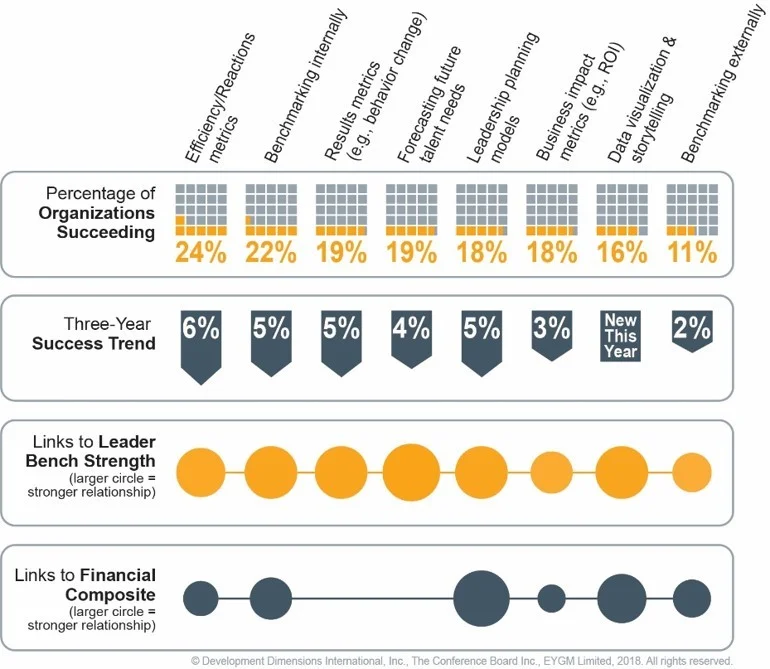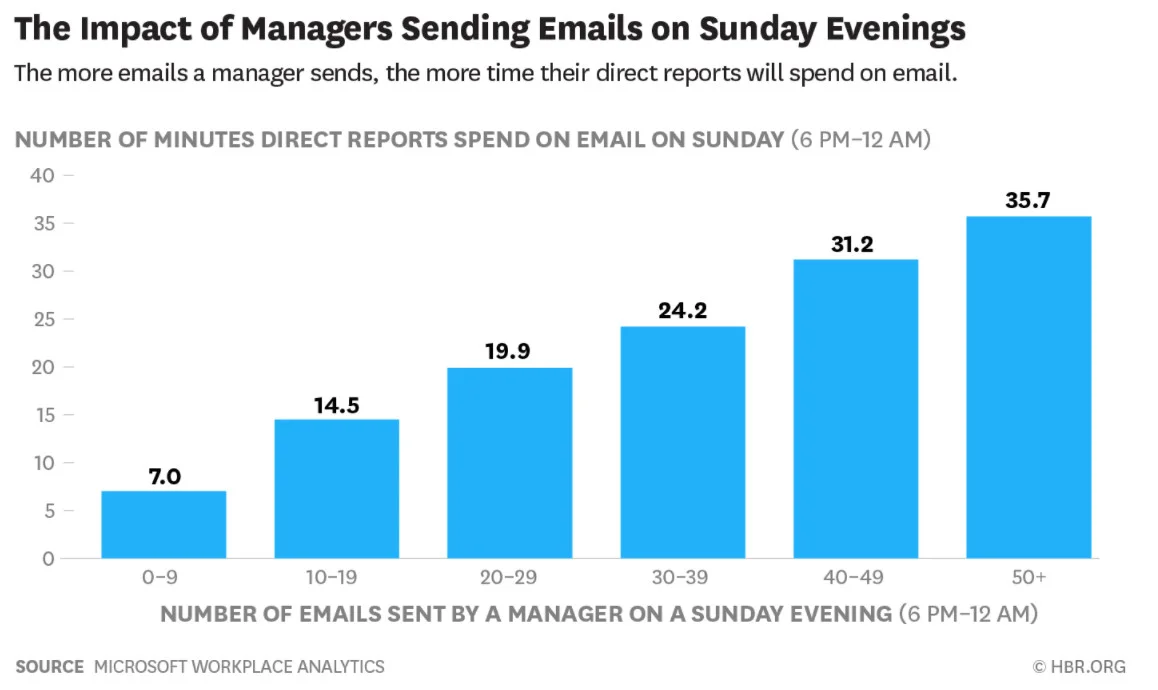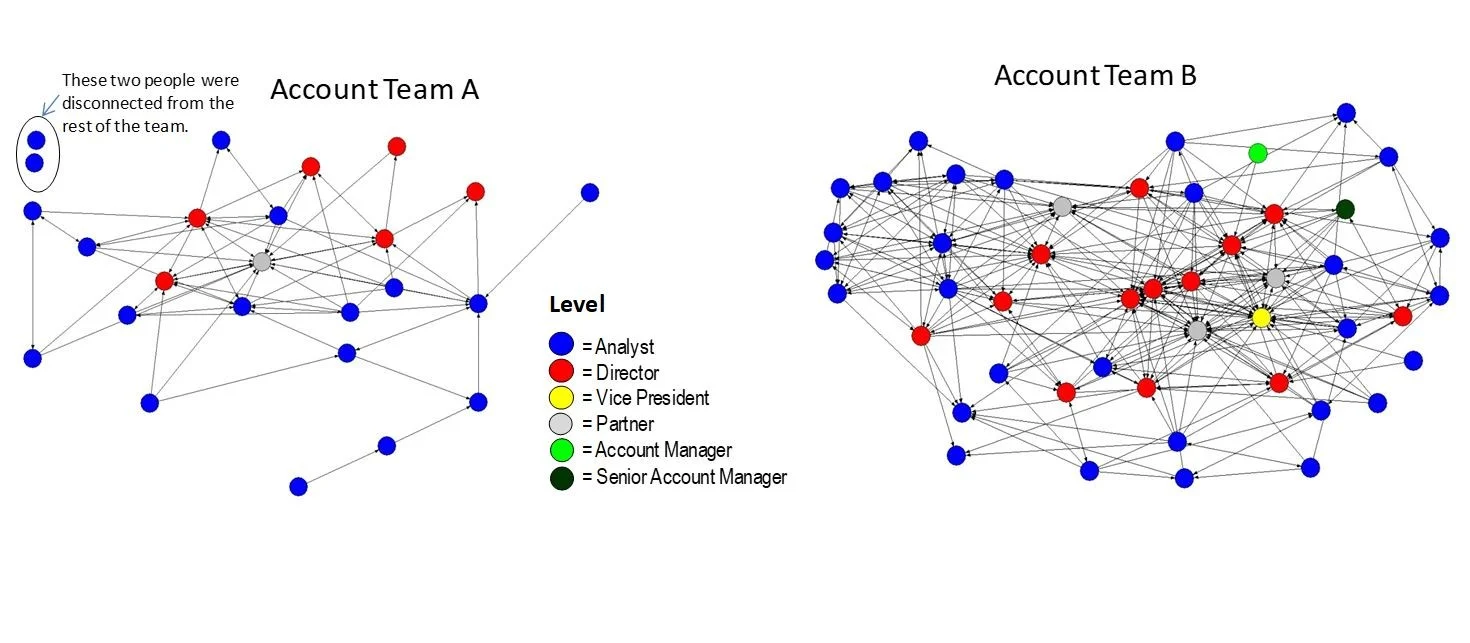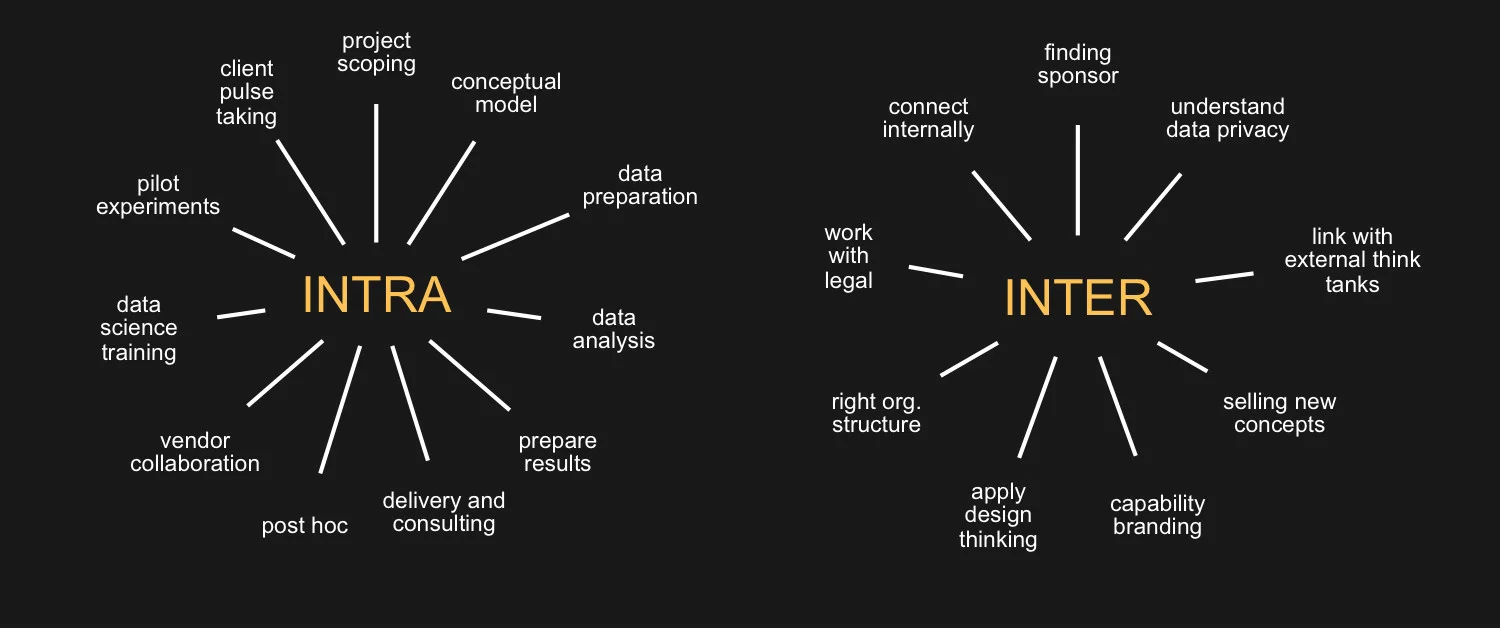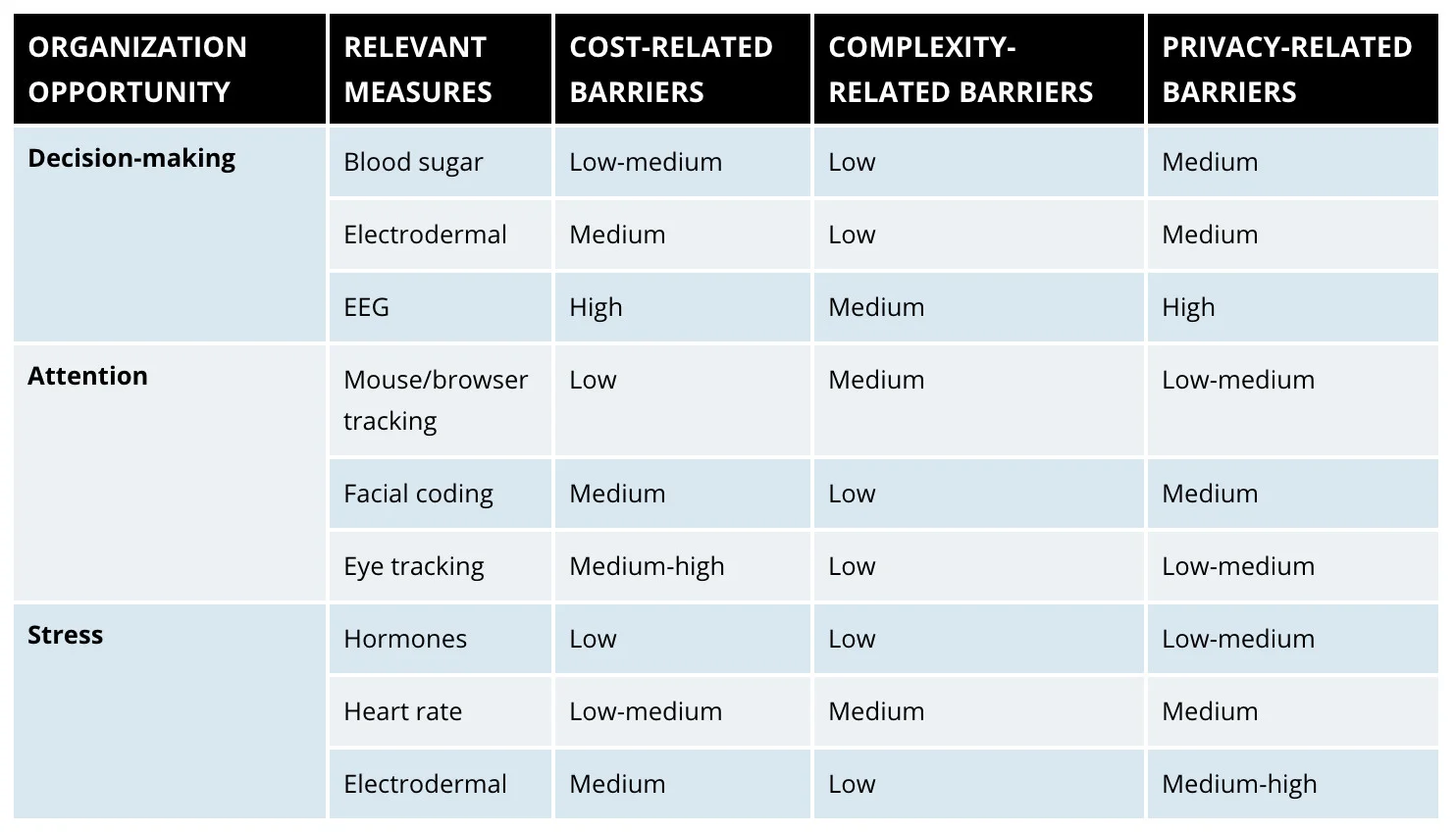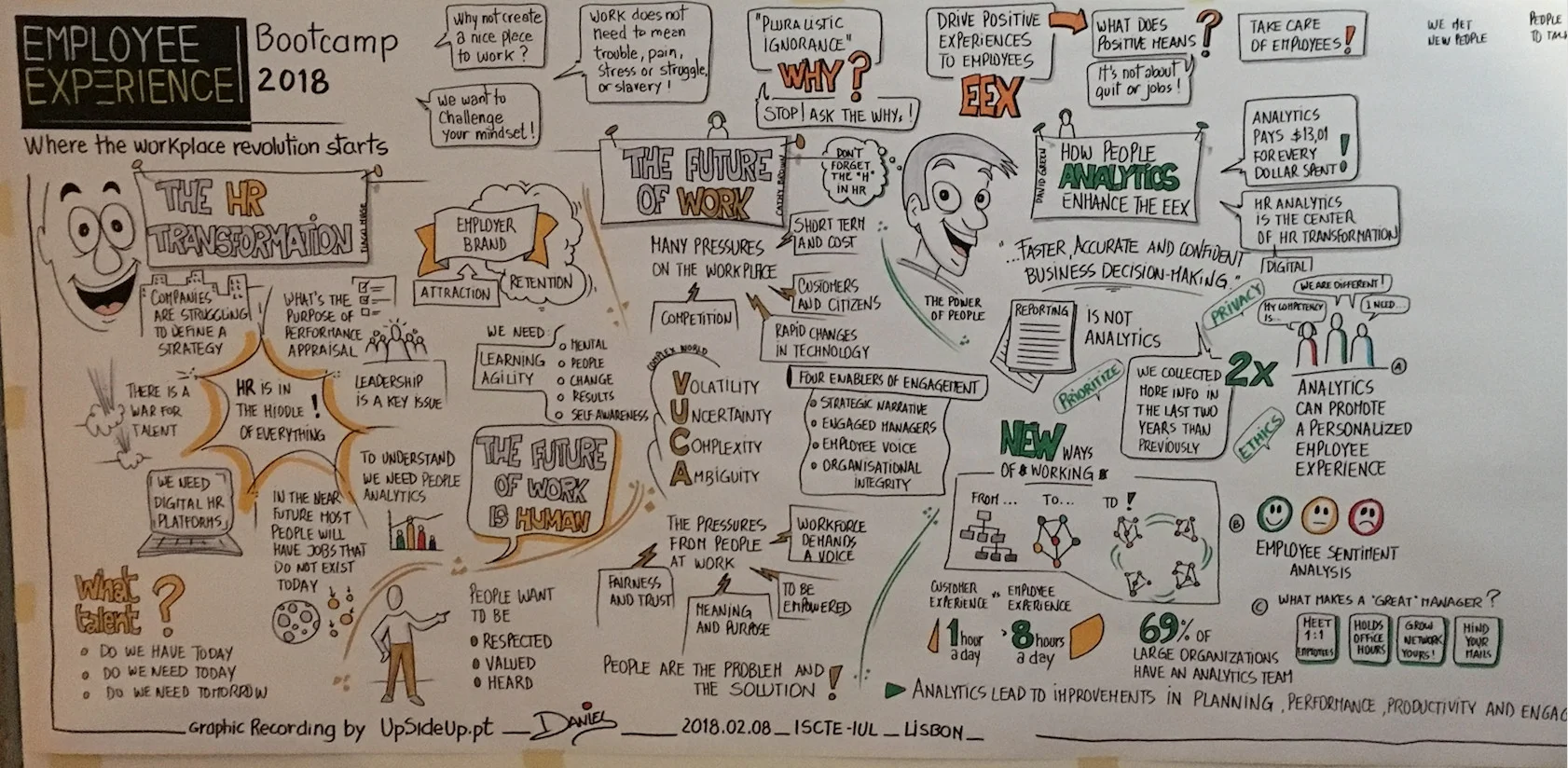The best HR & People Analytics articles of February 2018
February began in the sun of San Francisco and ended in the snow of the South of England. It’s been a month of contrasts!
As interest in and adoption of people analytics continues to rise and as the discipline continues to broaden and deepen, the range of subjects written on people analytics continues to diversify.
This month’s selection of ten articles and six podcasts covers topics including: new studies on leadership and the future of work, ethics, manager effectiveness, organisational network analysis, the critical role of the analytics translator, wearables and sensors, the role of the people analytics leader and the burgeoning HR technology market amongst many others.
So without further ado, let’s crack on:
1. EVAN SINAR– People Analytics Reversal of Fortunes
Evan Sinar kicks off proceedings this month with his analysis of what at first glance appear to be counterintuitive findings from the Global Leadership Forecast 2018. The study, which is authored by DDI, The Conference Board and EY, highlights 25 findings about the state, context, and future of leadership. One of these findings on people analytics highlights a “stunning regression” from the previous study in 2014/15 with success rates dropping for every area of analytics that was compared (see Figure 1). Whilst many organisations are undoubtedly still struggling to realise the full potential of people analytics, I'm inclined to agree with Evan's view that this is "likely a case of the analytics bar rising faster than HR can leap over it". Evan’s article goes on to describe the other findings highlighted in Figure 1 specifically the analytics practices that have the highest impact on bench strength and a financial composite of revenue growth, operating margin, EBITDA, and return on equity, before highlighting the analytics practices that have the highest impact on success.
Figure 1: A 'Stunning Regression' - comparison of success rates with analytics between the Global Leadership Forecasts 2018 with 2014/15 (Source: DDI, The Conference Board and EY)
2. NIGEL GUENOLE, SHERI FEINZIG & DAVID GREEN – The Grey Area: Ethical Dilemmas in HR Analytics
Ethics is arguably the most important element of people analytics and continues to be one of the biggest challenges facing practitioners. This is exacerbated due to technology – and the data it generates – moving in a direction too fast for legislation to keep up with and anticipate, and for employees and organisations to conceive. This research by the IBM Smarter Workforce saw 20,000 workers in 44 countries being surveyed for their perspective on data use in HR analytics. The results showed that within the ‘grey areas’, where legal precedent does not exist, or data ownership is unclear, context and culture matter most. A Case Study describing how IBM implemented its employee listening program Social Pulse is provided along with recommendations for organisations and employees on the use and availability of data. I’ll be presenting some of the findings from the research in the Smart Data breakout at UNLEASH in London on 20th March.
3. DAWN KLINGHOFFER – Managers are like a box of chocolates… | RYAN FULLER, NINA SHIKALOFF, RENEE CULLINAN & SHANI HARMON - If You Multitask During Meetings, Your Team Will, Too
In the first article, Dawn Klinghoffer describes a project the people analytics team at Microsoft undertook to answer that age-old question "What makes a great manager?” The team combined calendar and email data with engagement and other outcome related data in order to understand the behaviours that impact outcomes. The findings helped validate some longstanding hypotheses on what impacts manager effectiveness as well as uncovering some hidden gems too. These included i) the importance of 1:1 time and feedback, ii) manager network strength and size, and; iii) limiting the number of emails sent by managers out of hours. Two of the behaviours highlighted by Dawn: Working after hours and Multitasking in meetings are analysed deeper in the second article by Ryan Fuller et al. Figure 2 for example illustrates the impact of managers sending emails on a Sunday night.
Figure 2: The impact of managers sending emails on a Sunday evening (Source: Microsoft Workplace Analytics, HBR)
4. ROB CROSS - Using ONA to Identify Hidden Stars Who Can Help Boost Revenue (Case Study)
The articles above from Dawn Klinghoffer and Ryan Fuller et al are excellent examples of the use of passive ONA – in this case calendar and email meta data. This article, by Rob Cross, is an example of active ONA – where the data is primarily collected through surveys. The article provides a case study of a company that needed to boost revenue both through sales and the extension of existing business. The ONA project revealed several insights that enabled the organisation to implement a series of initiatives to boost revenue. These included: recognising and rewarding ‘hidden stars’ (i.e. not just those that close the deal), replicating the collaborative behaviour of successful teams (see example in Figure 3) and creating more space for key revenue producers. As ever with Rob Cross’ work, this is a hugely insightful article.
Figure 3: Team B has high client team connectivity with an average of seven relationships per person and was more able to service client needs, whilst Team A has two completely unconnected people and only three relationships per person on average (Source: Rob Cross)
5. NICOLAUS HENKE, JORDAN LEVINE & PAUL McINERNEY - You Don’t Have to Be a Data Scientist to Fill This Must-Have Analytics Role
This HBR article outlines the role of the ‘analytics translator’ whose purpose is to ‘bridge the gap’ between the insights identified by the analytics team through to the generation of business outcomes. The authors outline the skills required by translators: domain knowledge, technical fluency, project management skills and an entrepreneurial spirit. They also cite McKinsey research that predicts that by 2026, the surge in demand in the US alone for translators will reach 2-4m. Turning to HR, Luk Smeyers suggests in this classic article, that the role of the translator in people analytics should be the preserve of HR Business Partners. As people analytics continues to mature, it will be interesting to see if this is what transpires or whether organisations will create a specific role (let’s call it a People Analytics Business Partner) who works alongside the HRBP but has the deeper analytics knowledge required to build a more effective bridge with the business.
Translators help ensure that the deep insights generated through sophisticated analytics translate into impact at scale in an organisation
6. LAURA STEVENS - 5 steps to take in the journey towards sustainable People Analytics
Laura Stevens, Luk’s colleague at iNostix by Deloitte, published a quintet of excellent articles in 2017 and this, her first of 2018, is of a similar high standard. As highlighted in the earlier article by Evan Sinar, many organisations are still struggling to either get their people analytics programs off the ground or, for others that have, build sustainable capability. Laura provides five steps for organisations towards achieving sustainable impact including themes such as mission, priorities, operating model and team (e.g. build/borrow/buy).
7. ARUN CHIDAMBARAM & DAVID GREEN – The role of the People Analytics Leader – Part 2: Creating organisational culture and shaping the future
One lesson that I’d add to Laura Stevens’ list (Figure 4) of ingredients required to building sustainable people analytics capability is that of having an inspirational leader. One such person is Arun Chidambaram, who is Global Head of People Analytics at Pfizer. Arun shared some insights of what is involved in leading a people analytics team in two articles. In Part 2 (see also Part 1), Arun outlines the intra- and inter-responsibilities of the people analytics leader (see Figure 5), as well as sharing his experience on how to develop an analytical culture. In the second half of the article, Arun shares his thoughts on what lies ahead for the people analytics field and also provides several pearls of wisdom on the subject of ethics and privacy.
Figure 4: The Intra- and Inter- responsibilities of the Head of People Analytics (Source: Arun Chidambaram)
Hire the right skills at the right time. If you hire a statistician before you are ready for advanced data science, you’re going to end up with one unhappy camper
8. PETER HARTMANN – Not invented here syndrome in HR Analytics
The third article this month written by a Head of People Analytics (along with Dawn and Arun). Peter Hartmann makes a compelling case that too many people analytics teams are spending time and effort on reproducing (often with inferior results) what we already know from existing research. Peter explains that this is invariably caused by ‘not invented here syndrome’, where stakeholders may too often dismiss the notion that proven external research applies to their company. As Peter then goes on to suggest, citing a sublime article by Thomas Rasmussen and Dave Ulrich (Learning from practice: how HR analytics avoids being a management fad), a balance should be struck between combining external research with company specific variables as this will not only aid the speed of the work, but also the quality and validity of the insights.
A stronger link to the world of existing research would make the HR Analytics function more effective
9. KAREN HARRIS, AUSTIN KEMSON & ANDREW SCHWEDEL - Labor 2030: The Collision of Demographics, Automation and Inequality
This illuminating report by Bain outlines how demographics, automation and inequality have the potential to dramatically reshape our world in the 2020s and beyond. As Figure 5 shows, the headline finding is that the collision of these three forces could trigger economic disruption far greater than we have experienced over the past 60 years. The more advanced People Analytics teams are already helping their organisations prepare a path through this minefield, in terms of helping with restructuring, workforce mix and organisational design. The report examines six core areas: i) the impact of aging populations and the end of plentiful labour, ii) how automation on the one hand will increase productivity but on the other eliminate jobs and suppress wages, iii) how rising inequality could affect growth, iv) how development will unfold in the ‘turbulent’ 2020s, v) considers the outlook if governments intervene more actively in the marketplace to address economic imbalances, and; vi) focuses on the practical business implications of these trends for leadership teams. It’s a long, but worthwhile read.
Figure 5: The collision of demographics, automation and inequality is likely to create decades of disruption (Source: Bain Macro Trends Group Analysis)
10. EOIN WHELAN, DANIEL McDUFF, ROB GLEASURE & JAN VOM BROCKE - How Emotion-Sensing Technology Can Reshape the Workplace
This peak into the future describes how emotion-sensing technologies (EST) can potentially help employees make better decisions, improve concentration, and adopt healthier and more productive work styles. Examples of technologies that will help identify boredom, heightened stress levels and burnout are provided. Naturally, one of the big barriers to implementation (see Figure 6) are concerns related to privacy. The article describes the need for education and transparency, as well as clear governance but also interestingly recommends that employees should have sole control and ownership of their data. This debate on who ‘owns’ employee data is one I expect to grow in the coming years as EST become more commonplace.
Figure 6: Implementation Barriers for Emotion-Sensing Technologies - Multiple measures are available to appraise stress, attention, and decision-making. Each presents different cost-, complexity-, and privacy-related barriers (Source: MIT Sloan Management Review)
PICK OF THE PODCASTS
ALEXIS FINK & AL ADAMSEN – The PAFOW Podcast | BEN WABER & JOHN SUMSER - HRExaminer Radio – Executive Conversations | ANNA OTT & MATT ALDER - Bridging the Gap between HR and Technology | GEORGE LAROCQUE & MATT ALDER – Understanding the recruiting technology marketplace | ADAM GRANT & RAY DALIO – WorkLife with Adam Grant | ARUN CHIDAMBARAM, STELA LUPUSHOR & ANTONY EBELLE-EBANDA – The Practical Applications of Organisational Network Analysis
February was another terrific month for podcasts and my planes, trains and automobile journeys have been more fulfilling for being able to consume these gems. First, Alexis Finkjoins Al Adamsen on the PAFOW Podcast for an engrossing discussion on data, analytics, psychology and the future of work. Then Ben Waber is John Sumser’s guest for an equally fascinating discussion around sensor data, privacy and productivity. Next, two fantastic episodes of Matt Alder’s Recruiting Future podcast first with Anna Ott (newly of UNLEASH) and second George LaRocque, which together provide a comprehensive view of the flourishing HR and recruitment technology marketplaces. The penultimate podcast is the inventive first episode of Adam Grant’s new WorkLife podcast with special guest Ray Dalio of hedge fund Bridgewater Associates. Finally, Arun Chidambaram makes a second appearance this month to discuss the practical applications of ONA with Stela Lupushor and Antony Ebelle-ebanda of TrustSphere.
FINALLY...
It might be the shortest month, but I managed to pack plenty of activity into it:
- One of the main highlights came when I co-chaired the People Analytics & Future of Work conference in San Francisco with Al Adamsen. Check out my review: Analytics of the people, by the people, for the people as well as reviews from Arun Sundar here and Ben Teusch here.
- The other main highlight came when I spoke at the Employee Experience Bootcamp in Lisbon on how people analytics can enhance the employee experience. Check out Lesley Arens’ review of the conference here and also the image below, which captured some of the highlights of my speech as well as the other keynotes from Tiago Muge and Cathy Brown. Thanks once again to Magdalena Grasser and Diana Olivera for inviting me to speak.

